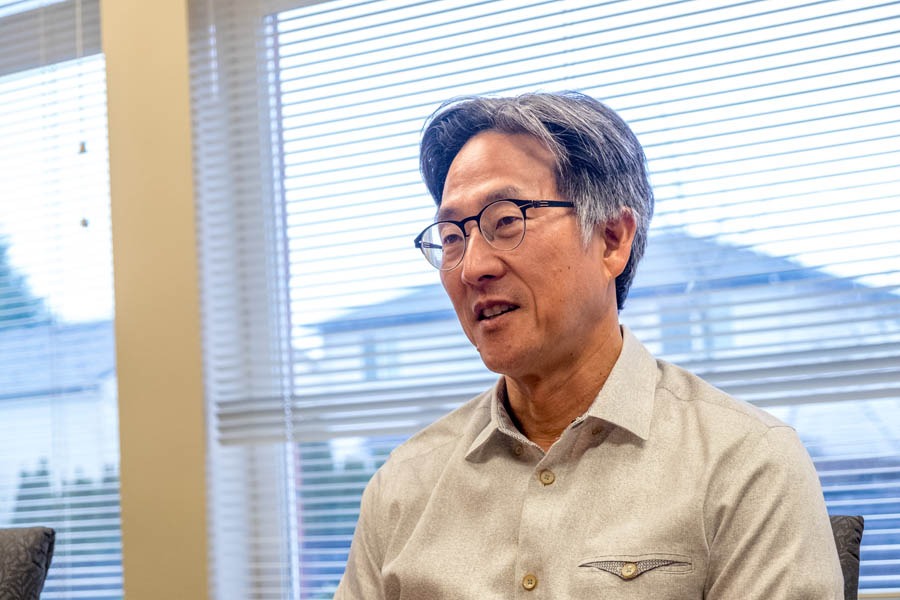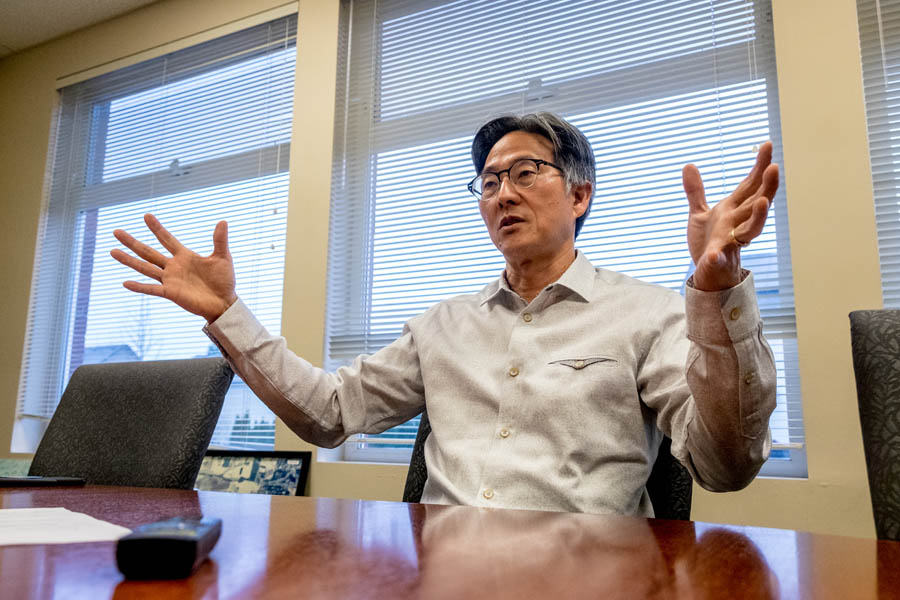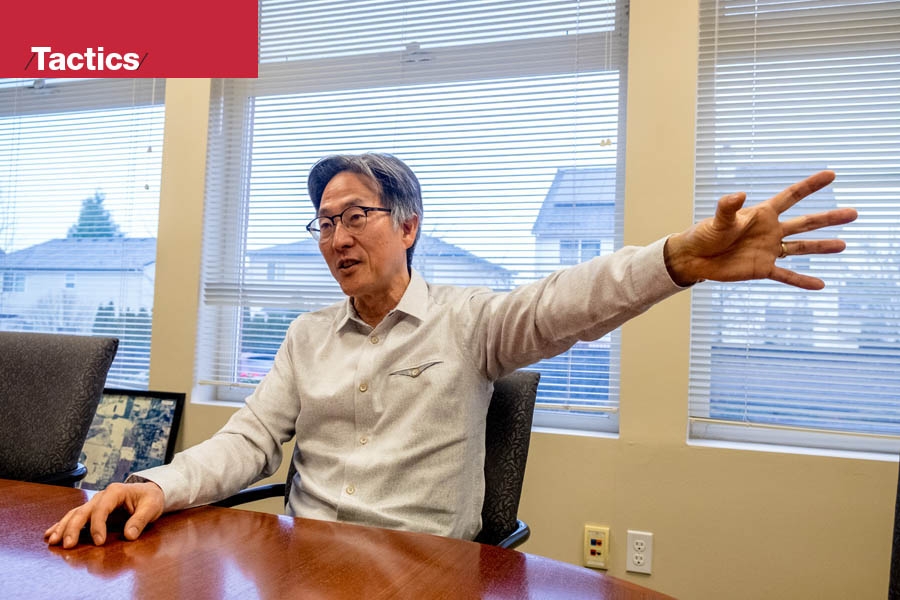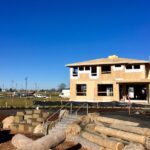Roy Kim, owner of RKm Development, talks about how he creates a sense of place through his real estate projects.
The suburbs around Portland are changing…fast. How that raw land takes shape promises to impact Oregonians for generations to come. Everything from strong community connections to a pride in place to how aggravated residents are by traffic jams is influenced by the built environment.
Roy Kim, owner of commercial real estate developer RKm Development, more than understands the stakes; he relishes them. In the past 18 years, Kim has developed a variety of dense, livable, mixed-use suburban neighborhoods. While the demographics for his signature projects — Washington County’s Bethany Village, downtown Beaverton’s LaScala and Gresham’s soon-to-come Rockwood Rising — are very different, the approach is the same: Create a centralized community with diversity in mind.
Kim talked to Oregon Business about how he solves development puzzles, how he energizes fallow neighborhoods and why successful developers need to be both forward-looking and maturely grounded.
(Excerpts have been edited for length and clarity.)
Bethany Village, your first project, is located in one of the Portland area’s wealthiest neighborhoods while your latest, Rockwood Rising, is in one of the poorest. How do those demographics influence the projects?
There will be no real difference between Rockwood and Bethany. To be an attractive place to live, a suburb needs to be developed with social aspects in mind. It’s not enough to have a subdivision with a few conveniences. There needs to be a sense of place that gives people the opportunity to meet, be entertained, eat and shop. That’s why city downtowns work so well.
Of course, the rents at Rockwood Rising will be lower because income is lower. That means we need a financial partner in the city. Otherwise it’s very similar. The land is strategically located on a light-rail station and large enough that we can create that sense of place with a mixture of uses. There’s a large plaza that will be heavily programmed with events.

Still, the community at Rockwood has very different needs than Bethany. How do you develop and build for that?
The theme for Rockwood is workforce training. It’s a way to raise opportunities for everyone in the community. Rockwood Rising will house organizations like Mt. Hood Community College Small Business Development Center, WorkSource Oregon and others to provide that training. There will be large tenant space for established business and small spaces that only need a small investment to work as a business incubator.
There will be a culinary apprenticeship program, too, which is important because the area is a food desert.
Food and restaurants play an important role in all of your developments but seem particularly vital at Rockwood, which has no nearby grocery store. Will you entice a grocery chain to come in?
No. I don’t think we can attract a grocery store to Rockwood. Instead our plan is to build a food hall with smaller, ethnic grocers that reflect the community. We hope to have a Hispanic, Russian and Middle Eastern grocery, plus a produce stand, butcher and small restaurants that don’t need a lot of investment up front. This approach is much riskier for the developer, but it also has the potential to be a really cool place.
Is that what motivates you? Creating a cool place?
I think I have the best job in the world. Buildings impact people’s lives in a very profound way. First of all, they’re very big, very expensive and permanent. That’s what I like about this business. You build a building that will be there for a very long time, and it will change people’s lives. It will change their driving patterns, change the stores they go to, change where they live and the experiences they have.
That changes people emotionally. I found that out after the LaScala project in downtown Beaverton. Before LaScala, there had been no new building in that area for decades. People thought that no one would invest in the neighborhood. Now they have a completely different view of their neighborhood because of this project. They think that anyone else who comes in should do neat things because this building is neat. It didn’t just foster their pride in place, it created it.
I believe that this will happen in Rockwood, too. The features of the neighborhood you grow up in, whether it’s a dense downtown or a crime-ridden area or a suburb with a playground where everyone gathers, those experiences get seared in your mind and affect your whole life. Rockwood has not seen new development, other than income-restricted housing, for a long time. Once this development is done, the kids will grow up with a different view of their home. Those emotional impacts excite me.
RELATED STORY: NOT YOUR GRANDPA’S SUBURBS
Does the prospect of a slowing economy worry you?
I’ve been at this long enough to know how cyclical real estate is. If a downturn is coming, an upturn is coming soon after. And downturns offer just as much opportunity. You don’t learn that until you’ve been doing this for 20 years. You start by following the rules, then you follow your instincts. That’s why development is hard for a young person to crack into.
It is challenging knowing what people are going to want five years from now. Visibility, for instance, used to be really important, but it’s less so now that people can find things like good restaurants on Yelp or Google. That’s interesting. I try to stay on top of trends by reading as much as I can about business, real estate, retail, hospitality, city planning…stuff that comes up on my Twitter feed.
And I get ideas from my younger staff members.
What kind of ideas?
They know what’s cool. We were designing apartment units and discussing how big the bedroom and kitchen should be. I looked around and everyone at the table was 50 or older. What do we know? We don’t rent apartments.
I gathered staff members who were in their 20s and asked them for one reason they would rent here. They all said, “I would rent here if I could bring my friends over and they thought it was cool.” They didn’t care at all about bedroom or kitchen size.
So we designed the units with balconies and island kitchens. That eats up square footage but is cool.
You build a building that will be there for a very long time, and it will change people’s lives. It will change their driving patterns, change the stores they go to, change where they live and the experiences they have.
So is that the future of development? Balconies and island kitchens?
Well, no. Development should not be homogeneous. Drive around Bethany and you’ll see 1,000 homes of similar size all built between 1990 and 2010. That attracts the same homogeneous group of people. Families around the same ages with school-age kids. No one very young or very old. North Bethany is trying to change that by mixing in attached housing and apartments, but it’s still very car dependent.
The area has changed dramatically in the past 30 years. There are more people, land prices and construction costs are higher. It makes sense to build dense, mixed-use projects that are not as car dependent. It also makes sense to offer diversity: different-size apartments, Class A office space mixed with coworking spaces, full-service and micro restaurants. I think the next-generation office space will be integrated with services like a coffee shop, bookstore, gym, doggie day care and people day care too.

What else do you see influencing development?
There is a huge wave of change coming to future developments related to technology, energy efficiency and sustainability. Buildings use more energy than anything. Technology like automated controls, occupancy sensors and artificial intelligence will allow us to monitor how the building performs at all times and be more energy efficient.
Eventually every building will generate its own power. We still need better batteries and solar panels, but in my mind, all of that is coming soon.
We also need different, multimodal transportation choices. I believe all of our transportation and traffic problems will be solved when we have self-driving cars. Theoretically, they will cost one-third of the price of being transported today because we won’t have to pay drivers and no one will have the expense of owning and maintaining a car. I hope this will solve accessibility issues for people who can’t afford a car or live in places with poor public transportation.
Then suburbs will really be booming. Everyone could live remotely and get anywhere. It could provide access for everyone.
To subscribe to Oregon Business, click here.





